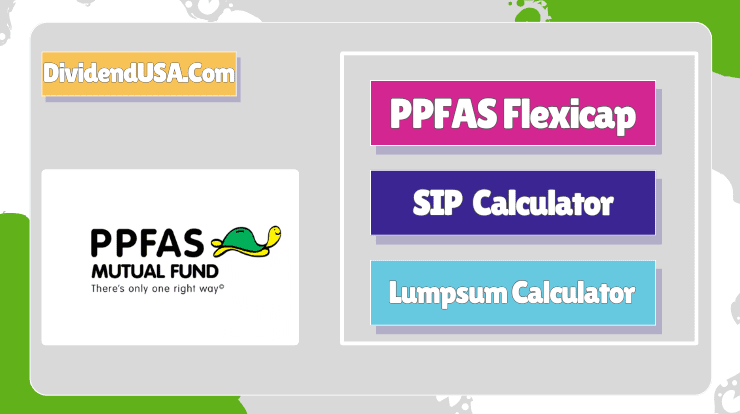Join WhatsApp Group
Join NowBritish Columbia Income Tax Calculator 2025
This calculator estimates your British Columbia provincial and federal income tax for the current year, showing both numbers and a visual breakdown.
Income & Deductions
Tax Calculation Results
Income Breakdown
In British Columbia for 2025, provincial income tax is calculated using a progressive bracket system where different portions of your taxable income are taxed at increasing rates. The 2025 BC brackets are: 5.06% on the first $49,279; 7.70% on income between $49,279 and $98,560; 10.50% on the next slice; 12.29%, 14.70%, 16.80%, and finally 20.50% on income over $259,829. Government of British Columbia+1 To find your total tax, you also need to calculate your federal tax, then combine both for the full burden. A BC Income Tax Calculator would take your taxable income, account for deductions and credits, and compute provincial + federal tax. Use it to see your marginal rate, average tax rate, and understand how much of your income goes to taxes.
Table of Contents
In Canada, income tax isn’t just federal—you also pay provincial (or territorial) tax based on where you live. If you’re a resident of British Columbia, you’re subject to BC’s own income tax rates in addition to federal rates. Understanding how these two systems work together is key to estimating your total tax liability accurately.
This guide explains the 2025 BC income tax rates, how provincial and federal taxes are calculated using marginal brackets, and how you can use our BC Income Tax Calculator to estimate your total tax owed—or refund due—quickly and accurately.
BC 2025 Provincial Income Tax Rates
British Columbia uses a progressive tax system, meaning higher portions of your income are taxed at higher rates. For the 2025 tax year, BC has eight provincial tax brackets. Here’s the official rate schedule:
| Up to $47,937 | 5.06% |
| $47,937 – $95,875 | 7.70% |
| $95,875 – $110,660 | 10.50% |
| $110,660 – $130,254 | 12.29% |
| $130,254 – $173,205 | 14.70% |
| $173,205 – $245,339 | 16.80% |
| $245,339 – $271,280 | 17.70% |
| Over $271,280 | 20.50% |
Note: These rates apply to taxable income after deductions like RRSP contributions and eligible expenses.
How BC’s Tax Rates Work (Marginal Tax Structure)
BC uses a marginal tax rate system, which means each portion of your income is taxed at the rate corresponding to its bracket, not your entire income at the top rate.
For example, if you earn $60,000 in BC:
- The first $47,937 is taxed at 5.06%
- The remaining $12,063 ($60,000 – $47,937) is taxed at 7.70%
This ensures fairness: as your income rises, only the “next dollar” is taxed at a higher rate.
Formula for provincial tax:
Provincial Tax = Σ (Income in Bracket × Corresponding BC Tax Rate)
This same principle applies to federal tax, just with different brackets and rates.
Federal Tax Rates (2025)
Your total tax bill includes both federal and provincial components. The 2025 federal income tax brackets are:
| Up to $57,375 | 15.0% |
| $57,375 – $114,750 | 20.5% |
| $114,750 – $177,882 | 26.0% |
| $177,882 – $253,414 | 29.0% |
| Over $253,414 | 33.0% |
Your combined marginal tax rate is the sum of your federal and BC provincial rates for each bracket. For instance, someone earning $100,000 in BC pays:
- 20.5% (federal) + 7.70% (provincial) = 28.2% on income between $57,375 and $95,875
How to Use the British Columbia Income Tax Calculator
Our British Columbia income tax calculator simplifies the process of estimating your total tax obligation for 2025. Just enter a few key details, and it computes both provincial and federal taxes instantly.
Inputs Needed
- Taxable income (after RRSPs, deductions, etc.)
- Filing status (single, married, common-law)
- Eligible tax credits (e.g., basic personal amount, disability, tuition)
- Province of residence (must be BC for provincial rates)
Outputs You’ll Receive
- BC provincial income tax
- Federal income tax
- Total tax payable
- Estimated net income (after tax)
- Breakdown by tax bracket (optional in advanced mode)
The calculator automatically applies the correct 2025 rates and accounts for non-refundable credits that reduce your tax owed.
Worked Examples with BC + Federal Tax
Let’s walk through two real-world scenarios using 2025 rates.
Example 1: $60,000 Annual Income (BC Resident)
Provincial Tax (BC):
- First $47,937 × 5.06% = $2,425.61
- Next $12,063 × 7.70% = $928.85
→ Total BC tax = $3,354.46
Federal Tax:
- First $57,375 × 15% = $8,606.25
- Next $2,625 × 20.5% = $538.13
→ Total federal tax = $9,144.38
Combined Tax: $3,354.46 + $9,144.38 = $12,498.84
Effective Tax Rate: ~20.8%
Example 2: $150,000 Annual Income
Provincial Tax (BC):
- $47,937 × 5.06% = $2,425.61
- $47,938 × 7.70% = $3,691.23
- $14,785 × 10.50% = $1,552.43
- $39,340 × 12.29% = $4,835.89
→ Total BC tax = $12,505.16
Federal Tax:
- $57,375 × 15% = $8,606.25
- $57,375 × 20.5% = $11,761.88
- $35,250 × 26% = $9,165.00
→ Total federal tax = $29,533.13
Combined Tax: $12,505 + $29,533 = $42,038
Effective Tax Rate: ~28.0%
Note: Actual tax may be lower due to credits like the basic personal amount ($15,705 federally in 2025).
Common Deductions & Tax Credits in BC
Both federal and provincial systems offer ways to reduce your tax bill:
Federal & BC Non-Refundable Credits (reduce tax owed)
- Basic personal amount (~$15,705 federal; $12,580 BC in 2025)
- Spouse or common-law partner amount
- Disability tax credit
- Tuition and education credits (carry-forward eligible)
- Age amount (for those 65+)
Deductions (reduce taxable income)
- RRSP contributions
- Union or professional dues
- Child care expenses
- Employment expenses (if eligible)
These can significantly lower your taxable income or final tax payable—our calculator includes options to input them.
Tips to Lower Your BC Income Tax
- Maximise RRSP contributions: Reduces taxable income and may move you into a lower bracket.
- Claim all eligible credits: Don’t overlook lesser-known ones like the BC climate action tax credit (refundable).
- Time capital gains: Consider deferring income or realising losses to offset gains.
- Use a TFSA: While contributions aren’t deductible, investment growth is tax-free.
- File jointly (where applicable): Income splitting with a spouse can lower combined tax.
Even small adjustments can save hundreds—or thousands—in BC provincial tax.
FAQ: British Columbia Income Tax
What are the British Columbia income tax rates for 2025?
British Columbia has eight brackets ranging from 5.06% (on income up to $47,937) to 20.5% (on income over $271,280).
Do I pay both federal and British Columbia provincial tax?
Yes. All BC residents pay federal income tax plus BC provincial income tax on the same taxable income.
How accurate is a British Columbia income tax calculator?
Our calculator uses official 2025 CRA and BC government rates and formulas. Accuracy depends on the correct input of income, deductions, and credits.
Are British Columbia tax brackets adjusted for inflation?
Yes. Both federal and BC brackets are indexed annually to inflation to prevent “bracket creep.”
Can I calculate BC tax without a calculator?
Yes, but it’s time-consuming. Manual calculation requires applying marginal rates to each income slice and subtracting credits. A BC provincial tax calculator automates this reliably.
Conclusion
Understanding your tax obligations in British Columbia doesn’t have to be overwhelming. With the 2025 BC income tax rates clearly defined and a reliable British Columbia income tax calculator at your fingertips, you can estimate your total tax—provincial and federal—with confidence.
Whether you’re budgeting for the year, planning RRSP contributions, or simply curious about your take-home pay, knowing how marginal tax brackets work and which credits you qualify for puts you in control. Use the tools and tips in this guide to make smarter financial decisions and keep more of what you earn.



